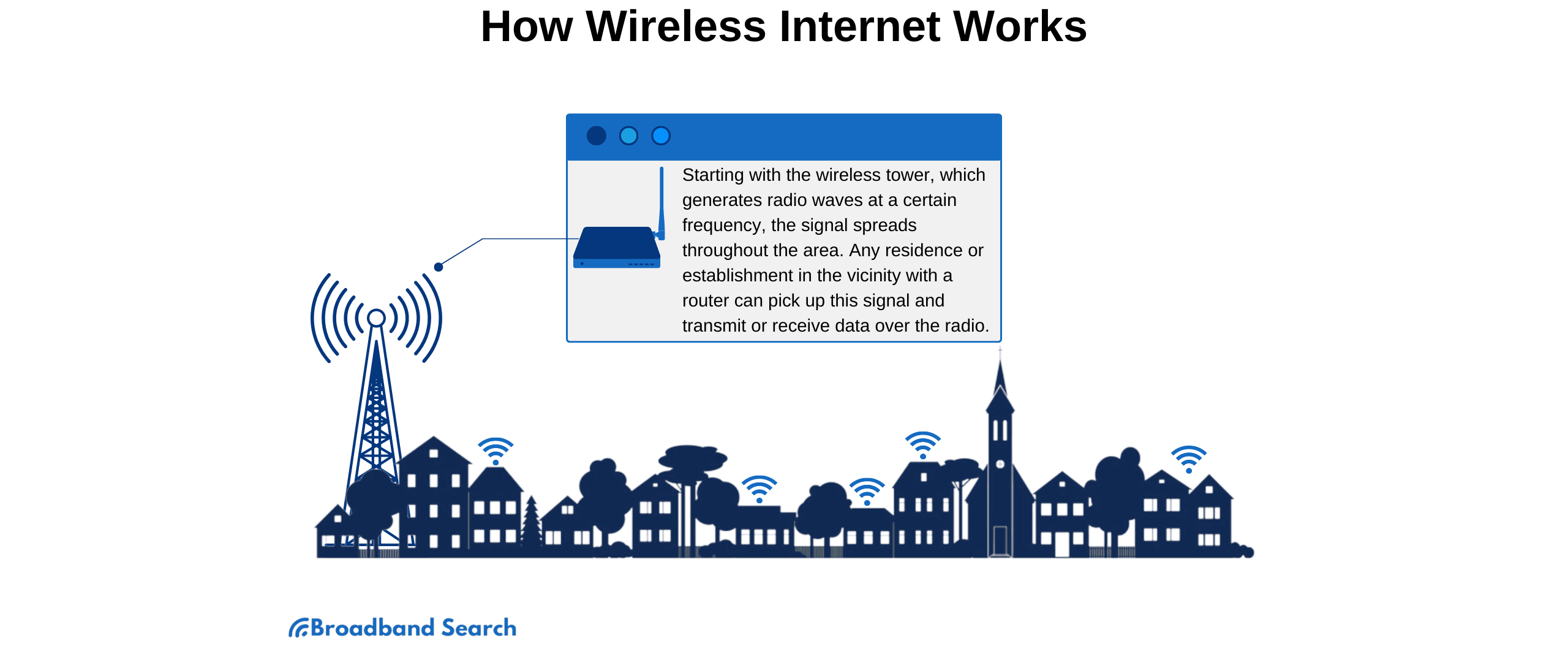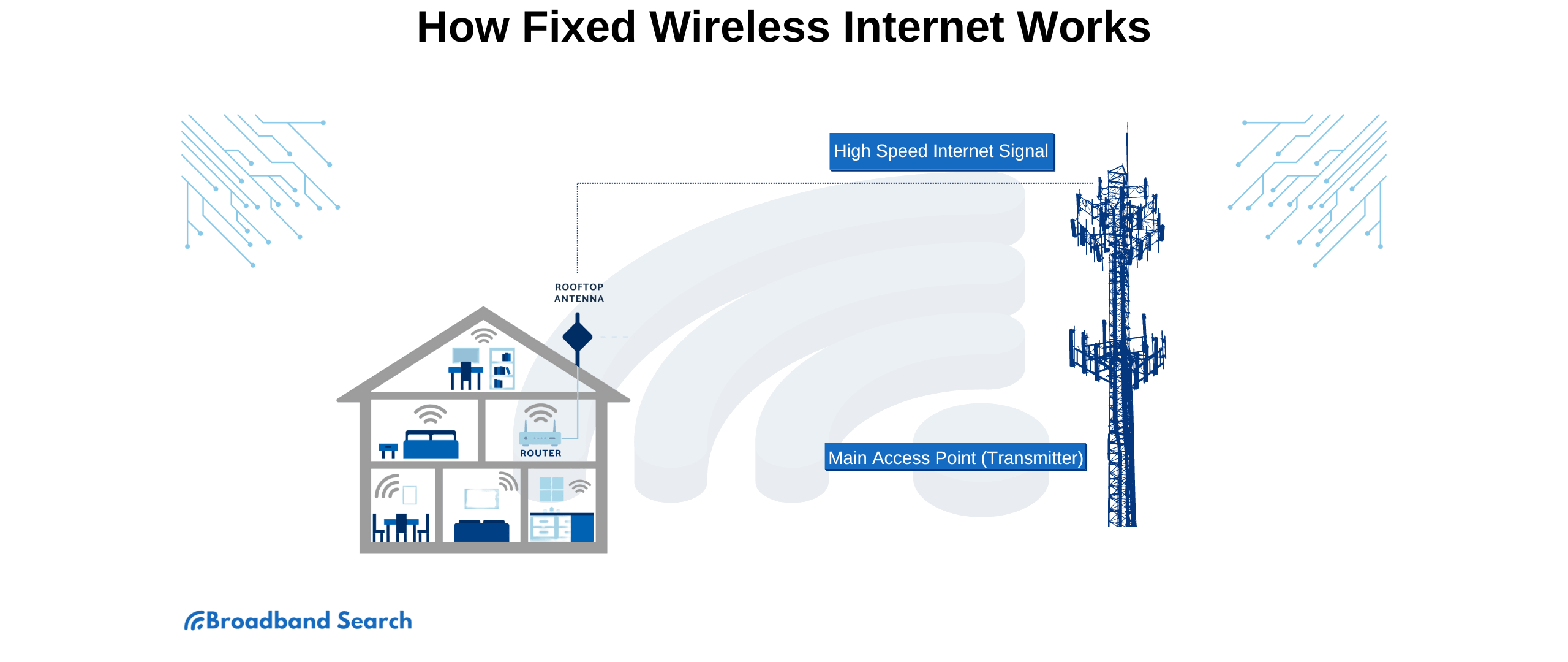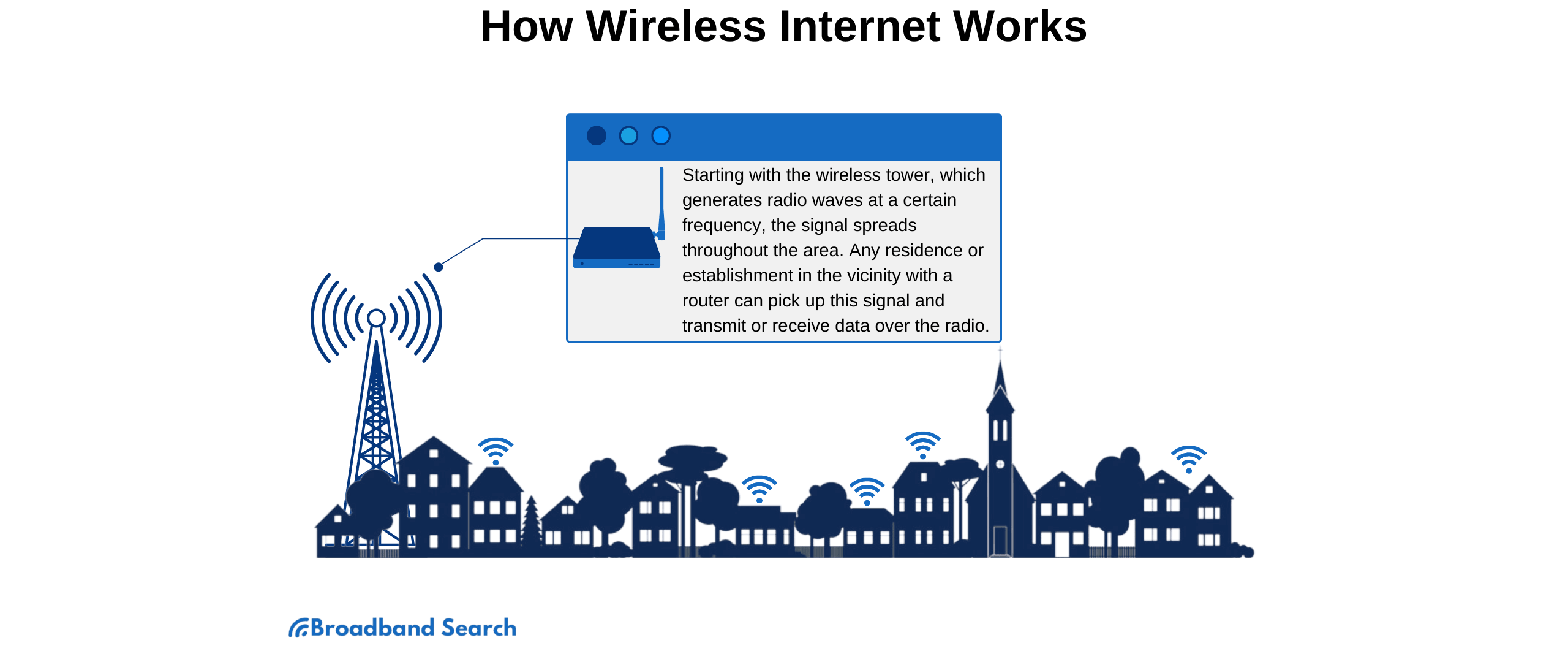When you start to compare broadband internet providers, chances are you're going to run up against some confusing terminology. Broadband, Wi-Fi, DSL, wireless, and cable have become synonymous with not only access to the internet, but with the internet itself.
And the marketing lingo ISPs use probably won't offer much in the way of clarification, because providers want to showcase their package deals. Technology makes a less compelling case than cost!
As a result, many of us simply refer to access to the internet as Wi-Fi. It's a convenient shorthand when you're out and about and looking for some free bandwidth, but not so great when you're trying to choose between internet service providers. You might find yourself asking questions like: "Is cable the same as broadband internet?" or "Is DSL wireless?" The answer to those questions is both more technical and less complicated than you might expect.
For those interested in learning more about how people access the internet, we've prepared a guide with more information about the types of high-speed internet connections and how internet service providers distribute data. So let's get a little technical!
First, What Do We Mean by "Internet"?
The old joke is that the internet is a "series of tubes," but it's actually a communications network - a way for computers to talk to one another. Data moves from one device to another over the "net" that connects them all together, and that data is written in a language (the Internet Protocol) that each of those intermediary devices can understand.
ISPs are in business because they own the physical cables (or satellites) that are the conduit through which you can send and receive information to and from other computers. Your modem is how you connect to those conduits, and your router is what allows you to connect (most often wirelessly) multiple devices to the internet via the modem.
So What is Broadband Internet?
Broadband is actually an electronics engineering term that refers to wide bandwidth data transmission, but in common usage broadband internet typically refers to the always-on, high-speed signal delivered via cable lines, phone lines, optical fiber, or radio signals.
If the internet is data that's being transmitted between devices, broadband describes the road on which that data is traveling. And it should only take a few minutes of browsing broadband internet providers to see that there are different types of roads - cable, DSL, fiber optic, wireless, fixed wireless, and satellite broadband - each of which has its own benefits and drawbacks.
The good news is that nowadays almost all internet connections are broadband connections. DSL and cable are comparable in terms of upload and download speeds, satellite is only going to get faster and more reliable, and wireless options abound. That means that your foremost concern as you compare broadband types and providers will be what is available in your location.
How Does DSL Fit In?
DSL, which stands for Digital Subscriber Link, is just a type of broadband internet that uses your phone line. Don't confuse it with dial-up! It's just about as fast as cable internet, and like all broadband types, it's always on, though it won't interfere with your ability to use your landline if you have one.
Choosing DSL over cable may simply be a matter of what's available in your area or if you live or work somewhere with lots of options, DSL may be priced lower or have better features. On the other hand, setting up DSL if you don't have a landline may mean paying extra fees to get it up and running. As you research different ISPs, look at an unbiased source like BroadbandSearch to get a feel for what subscription options and extras make the most sense for you and your household.
Cable, satellite, and wireless internet technology work differently, but they are all also forms of broadband internet. Cable internet leverages high-bandwidth cable television infrastructure to provide internet to customers. Satellite and wireless broadband use radio signals to do the same thing. And the much less common fiber optic service (known as FiOS) uses fiber optic lines.
Are Wi-Fi and the Internet the Same Thing?
When people talk about Wi-Fi, they're usually referring to one of two things: internet access in a home or business or wireless internet delivery. In both cases, Wi-Fi is a way of using radio waves to send and receive data.

Wi-Fi gives people access to broadband internet without a physical connection to a network. Once upon a time, the only way to network devices was to connect them to each other using cables. Now your router (or modem-router combo) lets your devices talk to other devices in the network using a short-range wireless connection. Or to put it even more simply, Wi-Fi is a way of getting the internet access your ISP provides to your devices without a cable.
Why Can I Have Wi-Fi But No Internet?
What many people don't realize is that Wi-Fi is independent from the internet. Devices on a home or business network can communicate with one another even when no internet connection is available. That's why when you're troubleshooting your internet connection on a device you might see your Wi-Fi is connected but still be unable to get online. Think of it like a TV that's tuned to the right channel but there's no broadcast for it to pick up.
Are Wi-Fi and Mobile Broadband the Same Thing?
A Wi-Fi network is just a local network that happens to be wireless and has the potential to grant you access to the internet, assuming your ISP is doing its job. Mobile broadband, on the other hand, refers to a totally portable internet service that is delivered to your devices via a cellular network and accessible anywhere there's a signal. 4G mobile broadband has the fastest download speeds, though 3G coverage is usually enough for streaming and 5G networks (that use higher frequencies to deliver faster internet) are on the horizon.
So why isn't everyone using mobile broadband all the time? Now that there are more unlimited data plans available, a lot of people do use it as an alternative to DSL or cable, but there are two issues they may run into.
First, mobile broadband networks are optimized for lots of people engaging in low bandwidth activities, so performance can suffer when that's not the case. And second, mobile networks are designed to sacrifice latency and speed in areas with coverage issues, so reliability can be a problem depending on where you live.
But Wait, What's Fixed Wireless?
Fixed wireless is a relatively new form of wireless broadband internet delivery that uses ground stations (also called transmission towers) instead of a cellular network. Subscribers have to install special transceivers to be able to communicate with transmission towers, which are connected to existing wired infrastructure. This wired/wireless approach to getting the internet to people may eventually expand the service footprints of ISPs across the US.

Considering that fixed wireless broadband is typically faster than 4G and doesn't suffer from the same kind of network latency issues that can be a problem with satellite broadband, you might assume that it will be the wave of the future. But the biggest barrier to fixed wireless becoming a widespread option is that it requires that users be within line of sight of a ground station.
And the Takeaway Is...?
Know your options, inside and out! You may live in an area where there are lots of ISPs and service packages to choose from, so the temptation to choose the biggest company with the lowest prices may be high. But your location and your environment can still play a role in the overall speeds your broadband provider can deliver and the reliability of your connection. And remember, there's so much more to choosing a broadband internet provider than price.
The more you know about how you connect to the internet, the smarter your choice of ISP will be. You'll be able to zero in on the broadband providers that give you what you need, don't try to sell you what you don't need, and fit into your budget.
Ready to learn more? Start comparing the ISPs in your area.
FAQ
What is ethernet?
Before the days of Wi-Fi, people accessed their internet connection by plugging their desktop or laptop into what was called an ethernet cord. You can still go online via an ethernet connection (it’s faster than Wi-Fi) but most people prefer the freedom to roam with wireless access.
Where did the term “broadband” come from?
The word “broadband” technically refers to wide-bandwidth data transmission. In the early days of internet access (think dial-up) it was not possible to use your home phone while you were online and vice versa. With the advent of DSL, it became the norm to refer to a connection where you could do both at the same time as broadband.
How fast are DSL connections?
The fastest DSL plan you will likely find delivers speeds at around 115 Mbps. This is good enough for most households unless you have multiple people doing high bandwidth stuff all at once - like Zoom meetings, online gaming, and 4K streaming.
What’s the difference between fiber and cable internet?
The most obvious difference is speed. While cable can offer similar download speeds as fiber - around 1 Gbps - it can’t hold a candle to upload speeds, which makes it a poor choice for activities like Zoom meetings or online gaming. The design is also different, with fiber cables constructed of hundreds of glass or plastic fibers down which a signal is transported by light flashes. Structurally, cable relies on electric pulses and copper lines.
Can I get 5G internet service at home?
Sort of like fiber optic service, 5G is in the process of being rolled out nationwide. In a perhaps unexpected move, some providers are offering 5G service at home if you happen to be within reach of a signal. This type of broadband is known as fixed wireless and is becoming more popular for those who might not have access to DSL, cable, or fiber optic.

